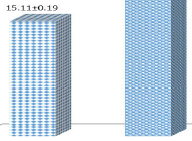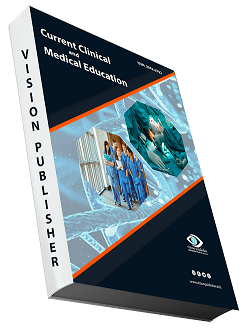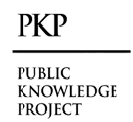Characterization of Bioactive Secondary Metabolites Produced by Streptococcus pyogenes Using Gas Chromatography-Mass Spectrometry (GC-MS) Evaluation of Its Antibacterial Activity
Keywords:
Streptococcus pyogenes, Secondary metabolites, Antibacterial,, GC/MSAbstract
Background: Metabolites are small molecules participating in metabolic reactions, which are necessary for cellular function, maintenance and growth. Typically, metabolites range from 50 to 1500 Da, while their concentrations span several orders of magnitude. The metabolome is highly dynamic, time-dependent, and metabolites are sensitive to many environmental conditions. Aims and Objectives: The purpose of this laboratory study was to study the truly biologically active chemical compounds produced by Streptococcus pyogenes and to evaluate the antibacterial bioactivity of these products. Method: Streptococcus pyogenes were isolated from pediatric patients with streptococcal pharyngitis, all swabs collected at Babylon Hospital for Women and Children, Samples were incubated in stationary culture at 37°C for 24 h, after which headspace collections were made. All bacterial species were grown on identical media with identical glassware. Concentration and analysis of volatile compounds : Volatile metabolites were concentrated and separated and analyzed via GC-MS. In this research, (GC-MS) techniques were used to investigate the biochemical components that are commonly referred to as bioactive substances. Furthermore, the ethanolic extract of Streptococcus pyogenes was tested in an experimental laboratory to determine whether it actually has effective antibacterial properties. Results: Using GC-MS analysis on Streptococcus pyogenes, the presence of the following bioactive components was experimentaly identified: Carvacrol, 1-(5(Methyl-2-furanyl)-1-buten-3-one, beta Sesquiphellandrene, Pentasiloxane, dodecamethyl, Pyrazine, 2,5-dimethyl-, Benzene, 2-ethyl-1,4-dimethyl, tumerone, AR- tumerone, ALPHA- tumerone, 6-Aza-5,7,12,14-tetrathiapentacene, β-HIMACHALENOXIDE, 3-Ethyl-o-xylene, Trimethylphenylsilane, 1,3-Hexadiene, 2,5-dimethyl, o-Mercaptoaniline, Benzonitrile, 4-amino, Cyclononasiloxane, octadecamethyl, 3-Decen-5-one, Cyclononasiloxane, octadecamethyl, Methyl linoleate, Gentisic acid, Shogaol, Isooctyl phthalate, 2,6,10,-Pentamethyl-2,6, 18-eicosapentaene, Heptasiloxane, hexadecamethyl, N-Methyl-1-adamantaneacetamide. It was investigated whether the secondary metabolites produced by Streptococcus pyogenes have antibacterial properties against three dangerous pathogens. In the current research, the biological activity of the ethanolic extract of Streptococcus pyogenes, as well as the conventional antibiotics Rifambin and Cefotoxime, against three different pathogens were investigated. Escherichia coli (14.09±0.18, 20.17±0.25, and 17.37±0.23), Proteus mirabilis (12.91±0.16, 19.47±0.23, and 15.11±0.19), and Staphylococcus aureus (11.01±0.14, 20.07±0.25, and 17.00±0.21). Streptococcus pyogenes metabolites were shown to show remarkable activity against Escherichia coli, with a mean value of 17.37±0.23.
Downloads
References
Bingol, K.; Bruschweiler-Li, L.; Yu, C.; Somogyi, A.; Zhang, F.; Brüschweiler, R. Metabolomics beyondspectroscopic databases: A combined MS/NMR strategy for the rapid identification of new metabolites incomplex mixtures. Anal. Chem. 2015, 87, 3864–3870. [CrossRef] [PubMed]
Veuthey, J.-L.; Guillarme, D.; Schoenmakers, P.J.; Forcisi, S.; Moritz, F.; Kanawati, B.; Tziotis, D.; Lehmann, R.;Schmitt-Kopplin, P. Liquid chromatography–mass spectrometry in metabolomics research: Mass analyzers inultra high pressure liquid chromatography coupling. J. Chromatogr. A 2013, 1292, 51–65.
Wang, Y.; Liu, S.; Hu, Y.; Li, P.; Wan, J.-B. Current state of the art of mass spectrometry-based metabolomicsstudies—A review focusing on wide coverage, high throughput and easy identification. RSC Adv. 2015, 5,78728–78737.
Ichou, F.; Schwarzenberg, A.; Lesage, D.; Alves, S.; Junot, C.; Machuron-Mandard, X.; Tabet, J.-C. Comparisonof the activation time effects and the internal energy distributions for the CID, PQD and HCD excitation modes. J.Mass Spectrom. 2014, 49, 498–508. [CrossRef] [PubMed]
Sleno, L.; Volmer, D.A. Ion activation methods for tandem mass spectrometry. J. Mass Spectrom. 2004, 39,1091–1112. [CrossRef] [PubMed]
Oppermann, M.; Damoc, N.E.; Crone, C.; Moehring, T.; Muenster, H.; Hornshaw, M. High precisionmeasurement and fragmentation analysis for metabolite identification. Methods Mol. Biol. 2012, 860, 145–156.
Donohoe, G.C.; Maleki, H.; Arndt, J.R.; Khakinejad, M.; Yi, J.; McBride, C.; Nurkiewicz, T.R.; Valentine, S.J. Anew ion mobility-linear ion trap instrument for complex mixture analysis. Anal. Chem. 2014, 86, 8121–8128.
Kushnir, M.M.; Rockwood, A.L.; Nelson, G.J.; Yue, B.; Urry, F.M. Assessing analytical specificity in quantitativeanalysis using tandem mass spectrometry. Clin. Biochem. 2005, 38, 319–327. [CrossRef]
Roberts, L.D.; Souza, A.L.; Gerszten, R.E.; Clish, C.B. Targeted metabolomics. Curr. Protoc. Mol. Biol. 2012.
Alonso, A.; Marsal, S.; Julià, A. Analytical methods in untargeted metabolomics: State of the art in 2015. Front.Bioeng. Biotechnol. 2015, 3, 23.
Lo, Y.-C.; Senese, S.; Li, C.-M.; Hu, Q.; Huang, Y.; Damoiseaux, R.; Torres, J.Z. Large-scale chemical similaritynetworks for target profiling of compounds identified in cell-based chemical screens. PLoS Comput. Biol. 2015,11, e1004153. [CrossRef] [PubMed]
Sumner, L.W.; Amberg, A.; Barrett, D.; Beale, M.H.; Beger, R.; Daykin, C.A.; Fan, T.W.-M.; Fiehn, O.;Goodacre, R.; Griffin, J.L.; et al. Proposed minimum reporting standards for chemical analysis Chemical AnalysisWorking Group (CAWG) Metabolomics Standards Initiative (MSI). Metabolomics 2007, 3, 211–221.
Salek, R.M.; Neumann, S.; Schober, D.; Hummel, J.; Billiau, K.; Kopka, J.; Correa, E.; Reijmers, T.; Rosato, A.;Tenori, L.; et al. COordination of Standards in MetabOlomicS (COSMOS): Facilitating integrated metabolomicsdata access. Metabolomics 2015, 11, 1587–1597.
Vene, K., Seisonen, S., Koppel, K., Leitner, E., and Paalme, T. (2013). A method for GC-olfactometry paneltraining. Chemosensory Perception, 6(4), 179–189.
Cambria, T., and McManus, J. (1990). Identification and removal of impurities in silane and dichlorosilane gasstreams. Solid State Technology, 33(10), 95-99.
Wollein Waldetoft K., Råberg L. To harm or not to harm? On the evolution and expression of virulence in groupA streptococci. Trends in Microbiology. 2014;22(1):7–13.

Downloads
Published
How to Cite
Issue
Section
License

This work is licensed under a Creative Commons Attribution 4.0 International License.
Current Clinical and Medical Education













